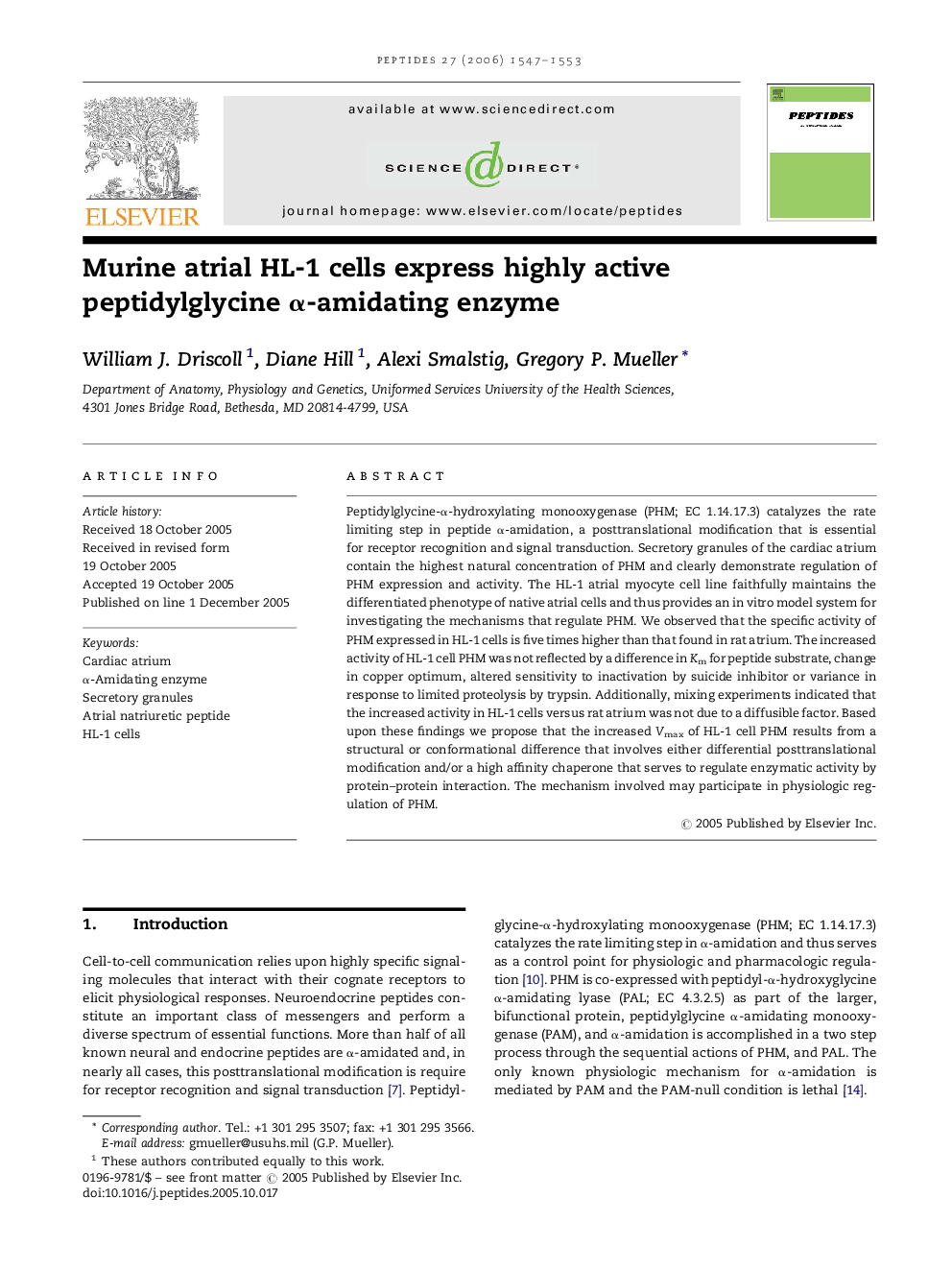| Article ID | Journal | Published Year | Pages | File Type |
|---|---|---|---|---|
| 2008640 | Peptides | 2006 | 7 Pages |
Abstract
Peptidylglycine-α-hydroxylating monooxygenase (PHM; EC 1.14.17.3) catalyzes the rate limiting step in peptide α-amidation, a posttranslational modification that is essential for receptor recognition and signal transduction. Secretory granules of the cardiac atrium contain the highest natural concentration of PHM and clearly demonstrate regulation of PHM expression and activity. The HL-1 atrial myocyte cell line faithfully maintains the differentiated phenotype of native atrial cells and thus provides an in vitro model system for investigating the mechanisms that regulate PHM. We observed that the specific activity of PHM expressed in HL-1 cells is five times higher than that found in rat atrium. The increased activity of HL-1 cell PHM was not reflected by a difference in Km for peptide substrate, change in copper optimum, altered sensitivity to inactivation by suicide inhibitor or variance in response to limited proteolysis by trypsin. Additionally, mixing experiments indicated that the increased activity in HL-1 cells versus rat atrium was not due to a diffusible factor. Based upon these findings we propose that the increased Vmax of HL-1 cell PHM results from a structural or conformational difference that involves either differential posttranslational modification and/or a high affinity chaperone that serves to regulate enzymatic activity by protein-protein interaction. The mechanism involved may participate in physiologic regulation of PHM.
Related Topics
Life Sciences
Biochemistry, Genetics and Molecular Biology
Biochemistry
Authors
William J. Driscoll, Diane Hill, Alexi Smalstig, Gregory P. Mueller,
